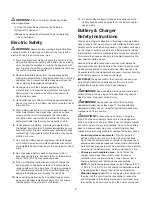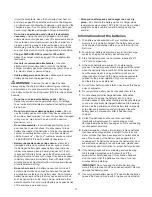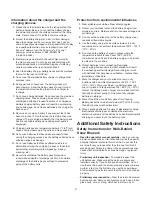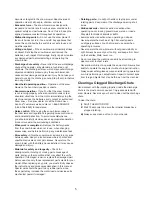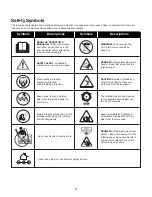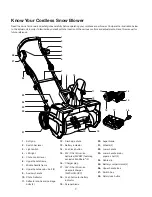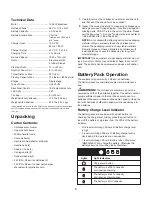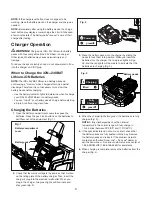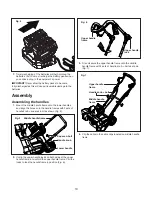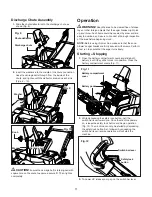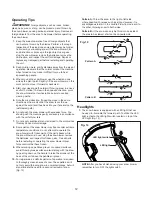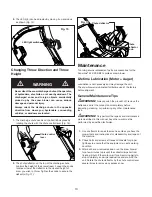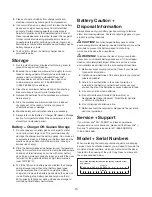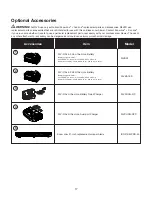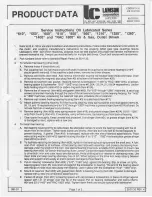
12
Operating Tips
m
WARNING!
Foreign objects, such as rocks, broken
glass, nails, wire, or string, can be picked up and thrown by
the snow blower, causing serious personal injury. Remove all
foreign objects from the area to be plowed before operating
the snow blower.
1.
Keep the area of operation free of foreign objects that
can become thrown by the blades. Perform a thorough
inspection of the area since some objects may be hidden
from view by surrounding snow. If the snow blower hits
an obstruction or picks up a foreign object during use,
stop the snow
blower, remove the batteries, remove the
obstruction, and inspect the unit for damage. Repair or
replace any damaged part before restarting and operating
the unit.
2.
Keep children, pets, and bystanders away from the area of
operation. Be aware that the normal noise of the machine
when turned on may make it difficult for you to hear
approaching people.
3. When moving the snow
blower, use the wheels on one
side as the pivot point. Slightly tilt the snow blower on this
pivot point to move it forward or backward.
4.
Start your clearing path outward, throwing snow in a back
and forth motion. To clear in
the opposite direction, pivot
the snow blower on its wheels. Make sure to overlap
clearing paths.
5. Note
the wind direction. If possible, move in the same
direction as the wind so that the snow is not thrown
against the wind (and thus back into your face and on the
just cleared path).
6. Do not push the snow
blower with excessive force. You
should push the machine gently and evenly in accordance
with the unit’s throw rate.
7. Do not apply additional man-made load to the motor since
this may cause motor damage.
8. Some parts of the snow
blower may freeze under extreme
temperature conditions. Do not attempt to operate the
snow blower with frozen parts. If the parts freeze while
the snow blower is in use, stop the snow blower, remove
the batteries, and inspect for frozen parts. Free all parts
before restarting or operating the snow blower. Never
force controls that have frozen.
9. W
hen working on pebbles, gravel, or unpaved surfaces,
avoid throwing loose surface material along with the snow
by pushing down on the handle to raise the scraper at the
base of the unit above the pebbles or gravel.
10.
For larger areas, a definite pattern of operation is required
to thoroughly clean an area of snow. These patterns will
not only avoid throwing snow in unwanted places, but will
also eliminate the need for a second removal of snow
(Fig. 13).
Pattern A: Throw the snow to the right of left side
where possible. For areas such as a long driveway, it is
advantageous to start in the middle. Plow from one end to
the other, throwing snow to both sides.
Pattern B: If the snow can only be thrown to one side of
the area to be cleared, start on the opposite side.
Headlights
1. The snow blower
is equipped with a
LED light that can
be used to illuminate the forward path. To utilize the LED
light, activate the LED light switch located on top of the
LED light (Fig. 14).
NOTE:
After you have finished using your snow blower,
remember to turn OFF the light switch.
Fig. 13
Pattern A
Pattern B
Fig. 14
LED light
LED light switch


